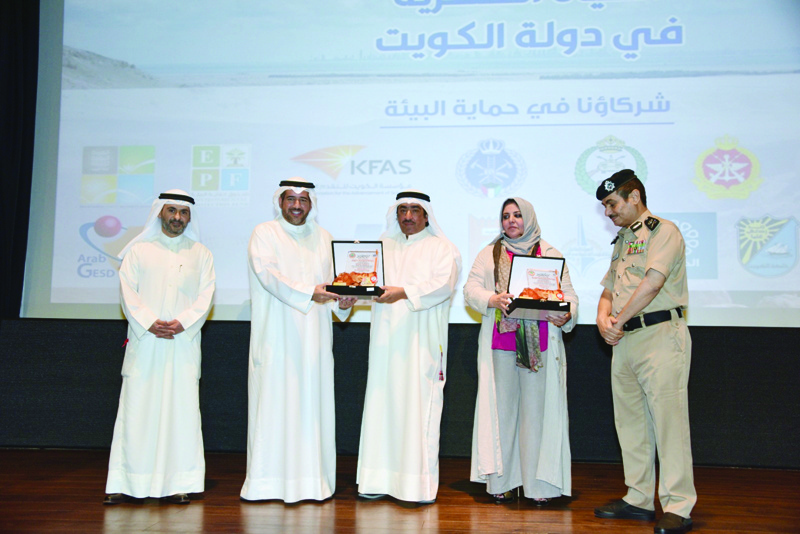 KUWAIT: In this handout photo, officials are seen during a ceremony organized by Kuwait Environment Protection Society to honor partners in a project to release a documentary on Kuwait's wildlife.
KUWAIT: In this handout photo, officials are seen during a ceremony organized by Kuwait Environment Protection Society to honor partners in a project to release a documentary on Kuwait's wildlife.By Nawara Fattahova
KUWAIT: Many different animal and plant species are found in Kuwait, especially in the desert areas. Kuwait Environment Protection Society (KEPS) decided to document Kuwait's wildlife in a documentary that was shot over seven years. Seventeen institutions, including government and private organizations and companies, partnered with KEPS in this project.
"These partners worked closely with us, so we are holding a ceremony to award them for their efforts in helping us document the wildlife and heritage of Kuwait," Chairperson of KEPS Dr Wijdan Al-Agab said during the awards ceremony held on Monday under the auspices of Interior Minister Sheikh Thamer Ali Al-Sabah.
The team faced many difficulties and obstacles during their work in the past seven years. "We worked for five months every year to produce the documentary on Kuwait's wildlife. This high-quality documentary is a visual environmental and scientific library," she added.
Environmental cooperation between various institutions is very important to preserve the wildlife of Kuwait. "The agreement between the interior ministry and KEPS was behind the success of the documentary, which spread environmental, cultural and legal awareness in our community," noted Assistant Undersecretary for Public Security Affairs at MoI Maj Gen Farraj Al-Zobi on behalf of the minister.
"The ministry of interior provided logistical support and complete protection for the teams working on the documentary. The teams fixed cameras in various locations near the borders, and MoI simplified the procedures of accessing these areas," he said.
Abdulameer Al-Jazzaf, Deputy Chairman of KEPS, said members and committees of the team were observing, documenting and photographing for over eight continuous hours daily in changing weather conditions. The documentary includes around 190 episodes of a total of 1,500 minutes on the most important components of wildlife that differ every season. "Each season includes between 60 to 80 field trips observing, documenting and photographing for the documentary, in addition to our work inside the documentary and media center at KEPS," he pointed out.
Each episode of the documentary is eight to 10 minutes long and includes rich information about wildlife in each area, in addition to narrating the history of these areas. Various awards and certificates were given to partners from different institutions in appreciation for their efforts during the past years.










